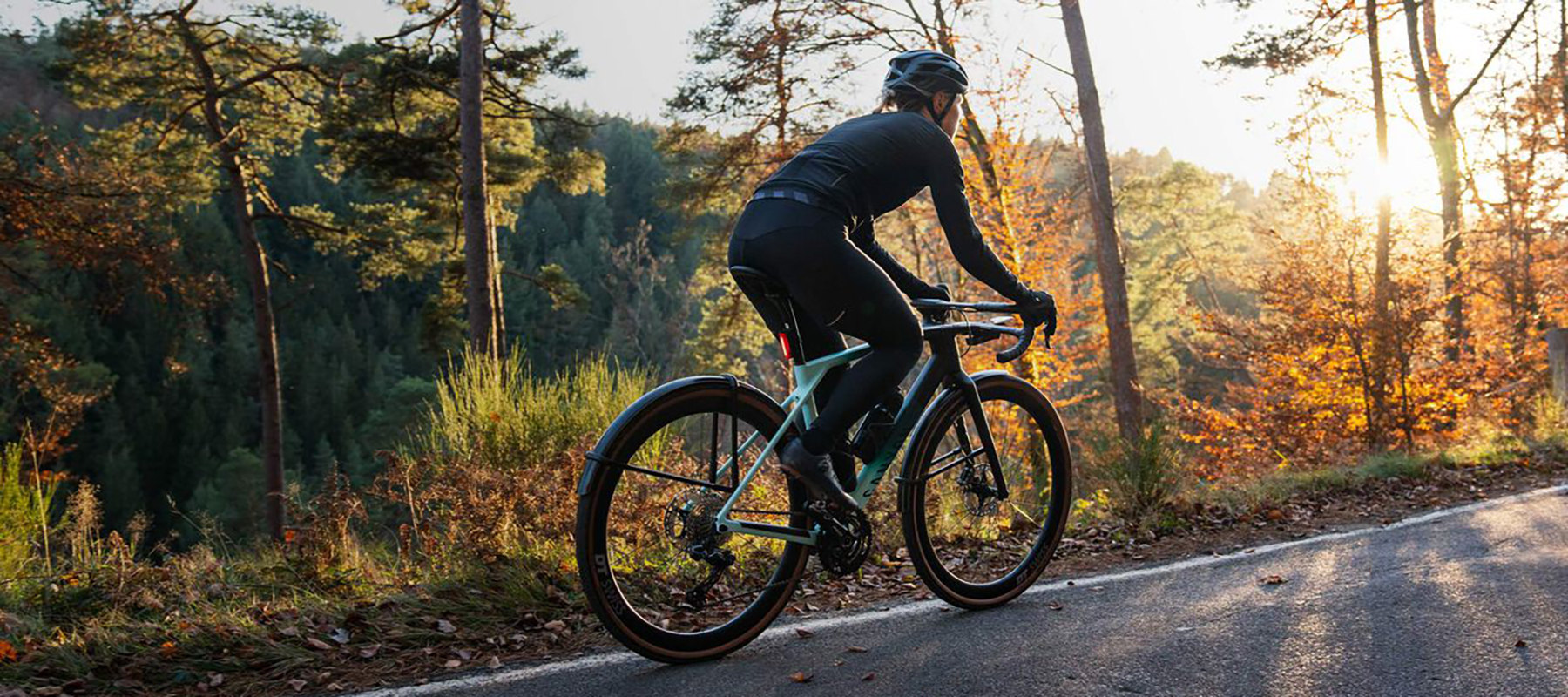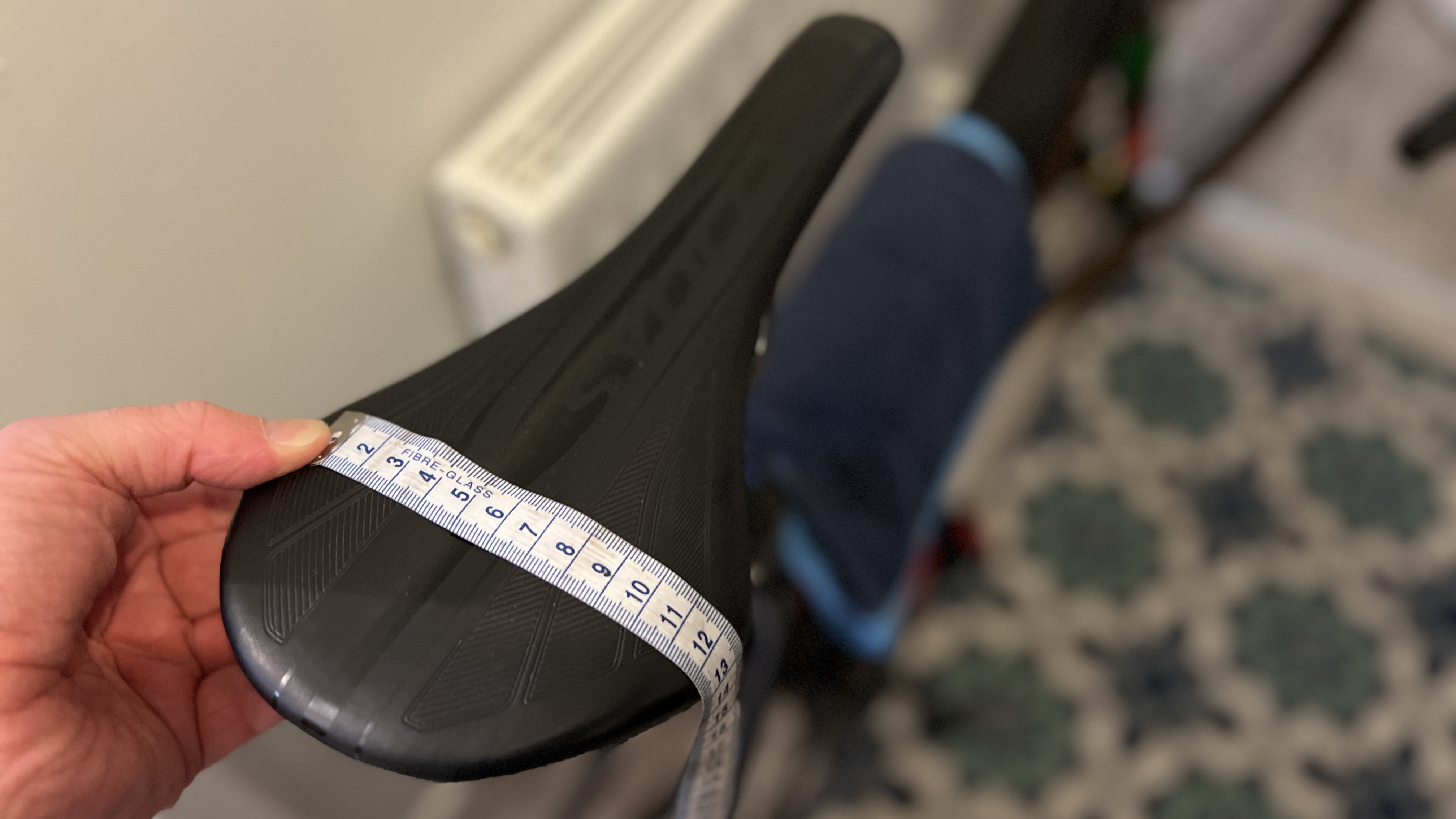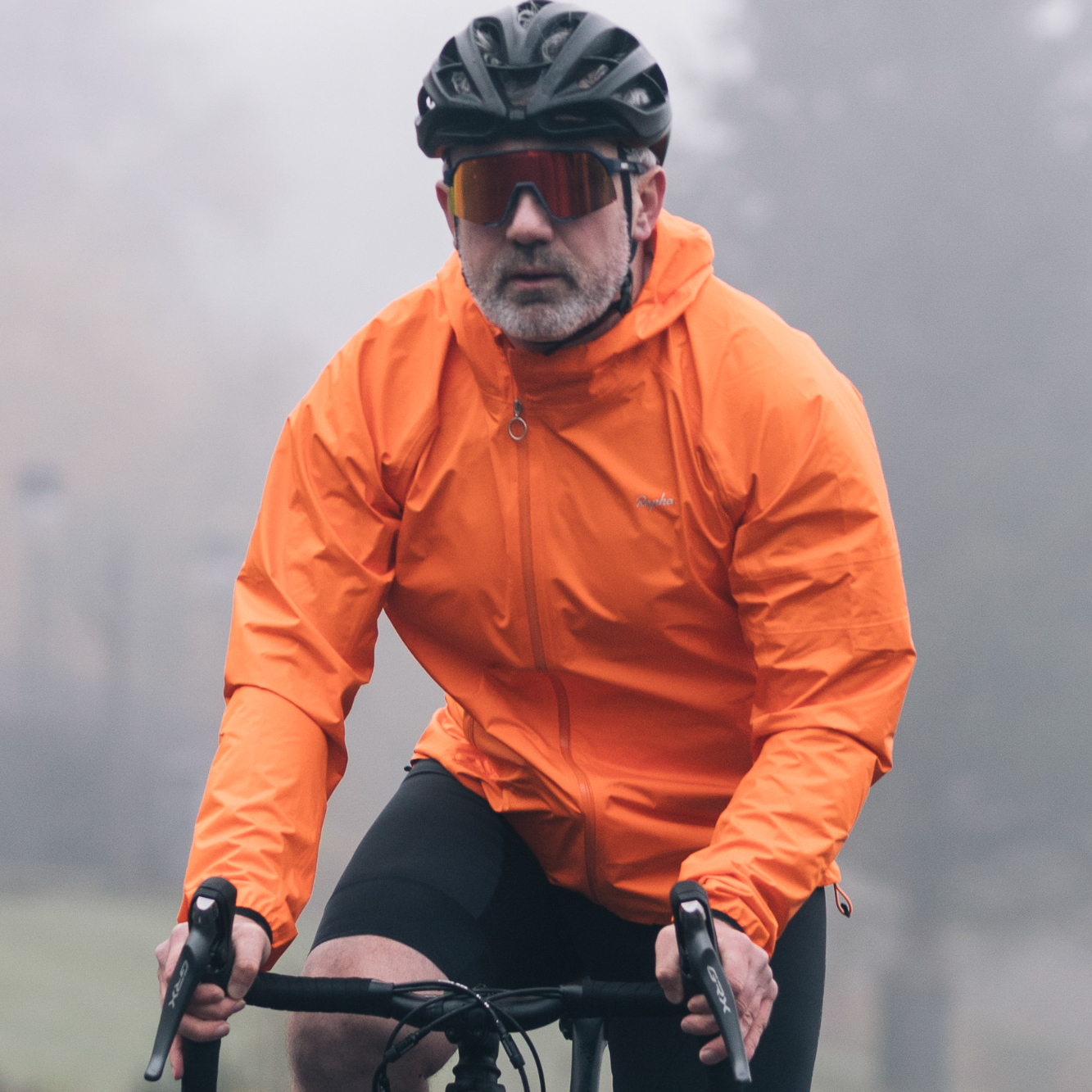Measuring your sit bones is easy and will help give you the perfect bike saddle fit. Here's how to do it...
Make your cycling much more comfortable with this free and simple method to discovering your sit bone width

The best bike saddle is the holy grail of cycling, one of those things people are constantly searching for, it's without a doubt one of the biggest upgrades you can make and the difference between enjoyable and comfortable rides or a very painful posterior, especially if you plan on spending long days bikepacking or gravel biking.
There are so many options for choosing for example, the best mountain bike saddle with manufacturers always looking for that perfect design, the market can look flooded with choices. In truth no saddle is perfect and no saddle will suit every rider or the type of riding you do, we are all unique after all and there are lots of factors to consider before buying.
In an ideal world, it is best to try a new saddle before buying it. However, it's highly unlikely your local bike shop will have every saddle out there and even less chance they'll allow you the option of "trying before buying" even if they have a lenient return policy, where do you start with the amount of choice?
One of the easiest things you can do to narrow down the choice on the best MTB for comfort is to measure your sit bones and select a saddle that is the correct size. But, what are my sit bones you ask? and how do I measure them? Read on below to find out!

What is a sit bone?
So firstly if you don't know, the clue is in the name, but your sit bone, or to give them the correct medical name, the Ischial Tuberosity, is the V-shaped bone at the bottom of the pelvis that makes contact with a surface when you sit down. If you’ve ever sat on a hard seat for a long time you’re no doubt familiar with these pokey bones and the discomfort you can get.
Bike saddles are designed to provide optimal support to sit bones for maximum comfort. Too narrow and sit bones are unsupported, causing the rider undue muscle and tissue stress. Too wide and sit bones can rest awkwardly on the edge of the center channel where saddles offer little to no padding.

How to measure sit bone width using cardboard
This is both the most low-tech, and the most accurate at-home method. Grab a flat piece of corrugated cardboard, if like my household, you'll currently have a plethora of Christmas cardboard lying around. Find a suitable piece and place it on a flat surface. Sit down on the cardboard, and settle in so your sit bones make an indentation. You can even pull up on the chair to press your butt and sit bones into the surface.
Hop up and use a pen to circle the indentations. Mark the approximate centers with a plus sign, and use a ruler to get the distance between the center marks. Make sure your clothing isn’t giving a false result; for example, jeans rivets poking the cardboard instead of your sit bones. A firm chair works best, so don’t bother trying to do this test on the couch. If you’re not sure if you did the test right, grab a fresh piece of cardboard and do it again just to make sure.
The cardboard sit bone test works similarly to the high-tech, pressure-sensitive devices saddle brands have at their disposal so the results are generally quite accurate.

How do I use my sit bone width to find the right saddle fit?
Every brand provides slightly different information when it comes to saddle width. Some offer a range of sit bone widths for each size, while others simply give the overall width of the saddle. In most cases if your sit bone width is narrower than the width of the saddle by at least 15mm this will ensure you’re not right on the edge, or worse, your sit bones are unsupported.
If after purchase you find that a saddle is uncomfortable even though it’s the right size, check to make sure you have the saddle positioned appropriately. For example, if the saddle is installed too far back away from the bars, your sit bones could be resting closer to the nose of the saddle where it narrows. The saddle angle can cause similar problems if the tilt causes you to slide toward the front or back of the saddle and away from the widest spot where sit bones are supposed to rest.

Having done the test myself on two of my current saddles, it was an interesting result. My gravel Syncros saddle shows a slightly narrow fit and my Scott mountain bike saddle showing wider and almost perfect. Although there is not much in it only a few mms and both saddles seem fine to me when I ride, it's worth doing and experimenting with position, and we all love to tinker. It also means when you come to an upgrade you have the ideal number in mind.

Paul Brett joined BikePerfect as a staff writer in 2022. He has been an avid cyclist for as long as he can remember, initially catching the mountain biking bug in the 1990s, and he raced mountain bikes for over a decade before injury cut short a glittering career. An award-winning photographer, when not riding a bike, he can be found at the side of a cyclocross track or a downhill mountain bike world championship shooting the action. Paul was the founder, editor and writer of Proper Cycling magazine, and he's traveled the world interviewing some of the biggest names in mountain biking and writing about some of the biggest cycling brands.
Current rides: Canyon Inflite, Specialized Diverge, Marin Alpine Trail 2
